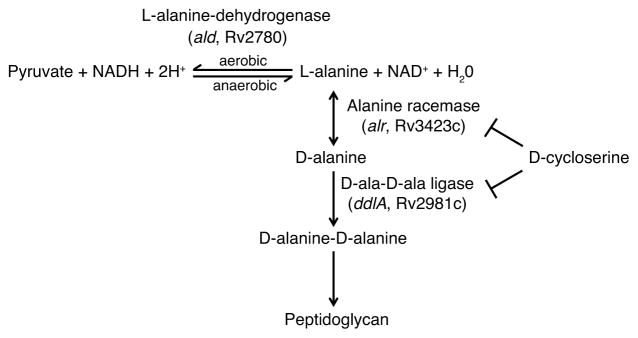Figure 3.
Alanine metabolism pathway in M. tuberculosis. L-alanine-dehydrogenase catalyzes the NAD-dependent interconversion between L-alanine and pyruvate. Under aerobic conditions this reaction allows for the utilization of L-alanine as a nitrogen source, whereas under hypoxic conditions this reaction allows for NADH recycling to NAD+. Separately, the initial step of peptidoglycan synthesis involves conversion of L-alanine to D-alanine by alanine racemase. Two D-alanine molecules are joined by D-ala-D-ala ligase to produce the dipeptide D-alanine-D-alanine, which is subsequently incorporated into the pentapeptide chain of the peptidoglycan cell wall. Both alanine racemase and D-ala-D-ala ligase are competitively inhibited by D-cycloserine, an analog of D-alanine.

